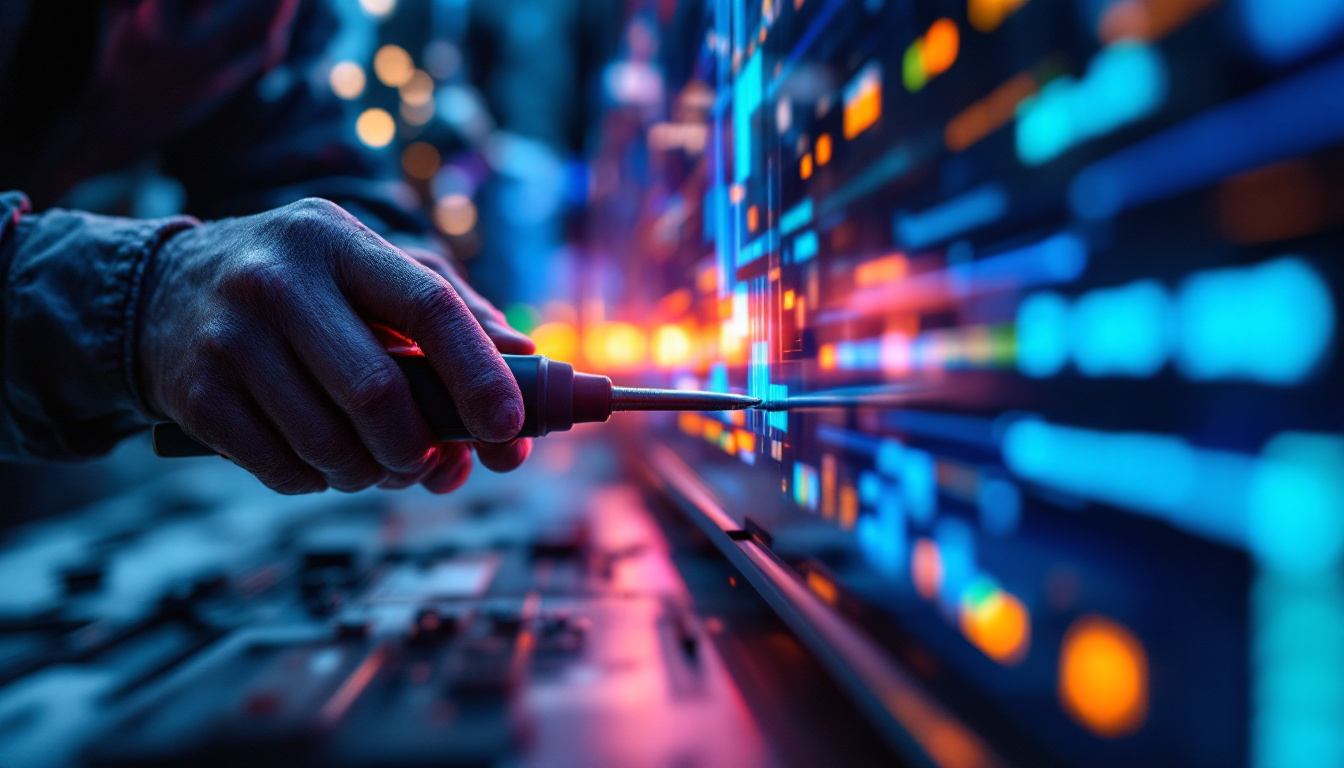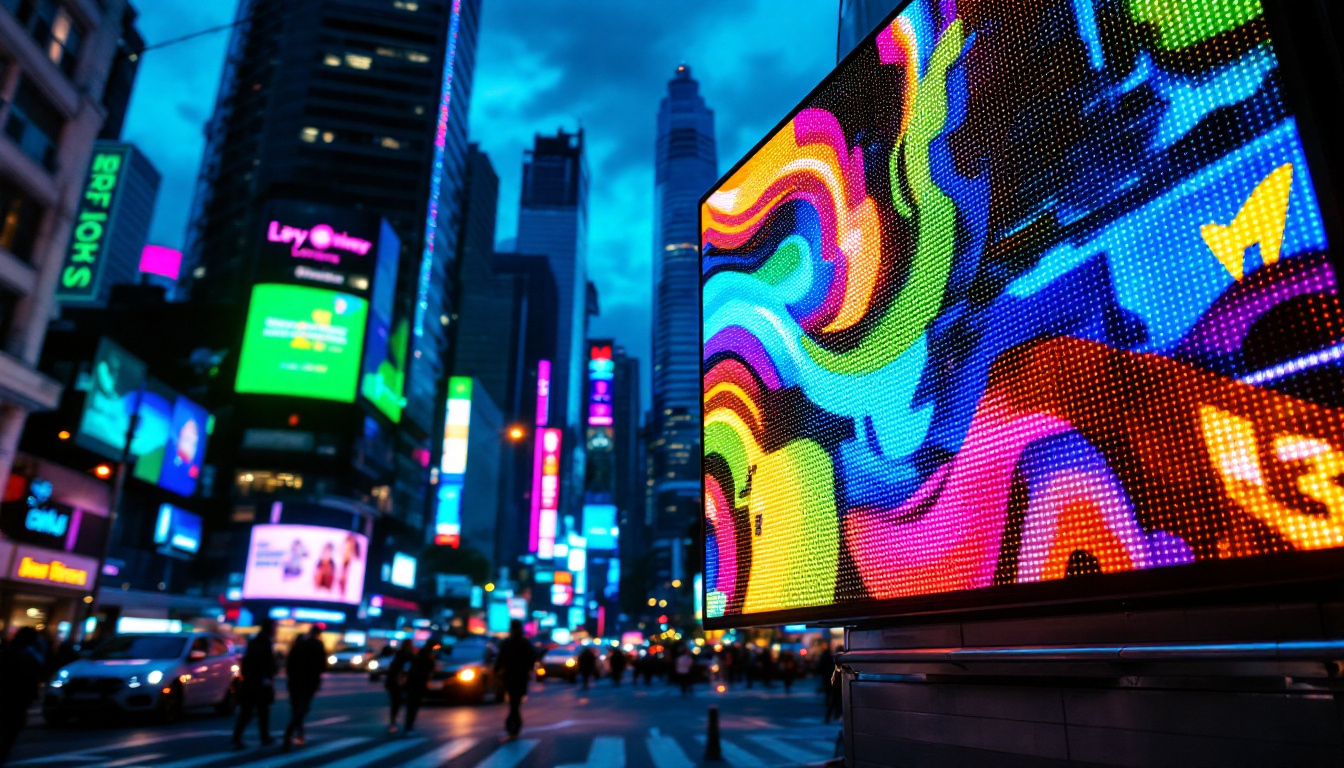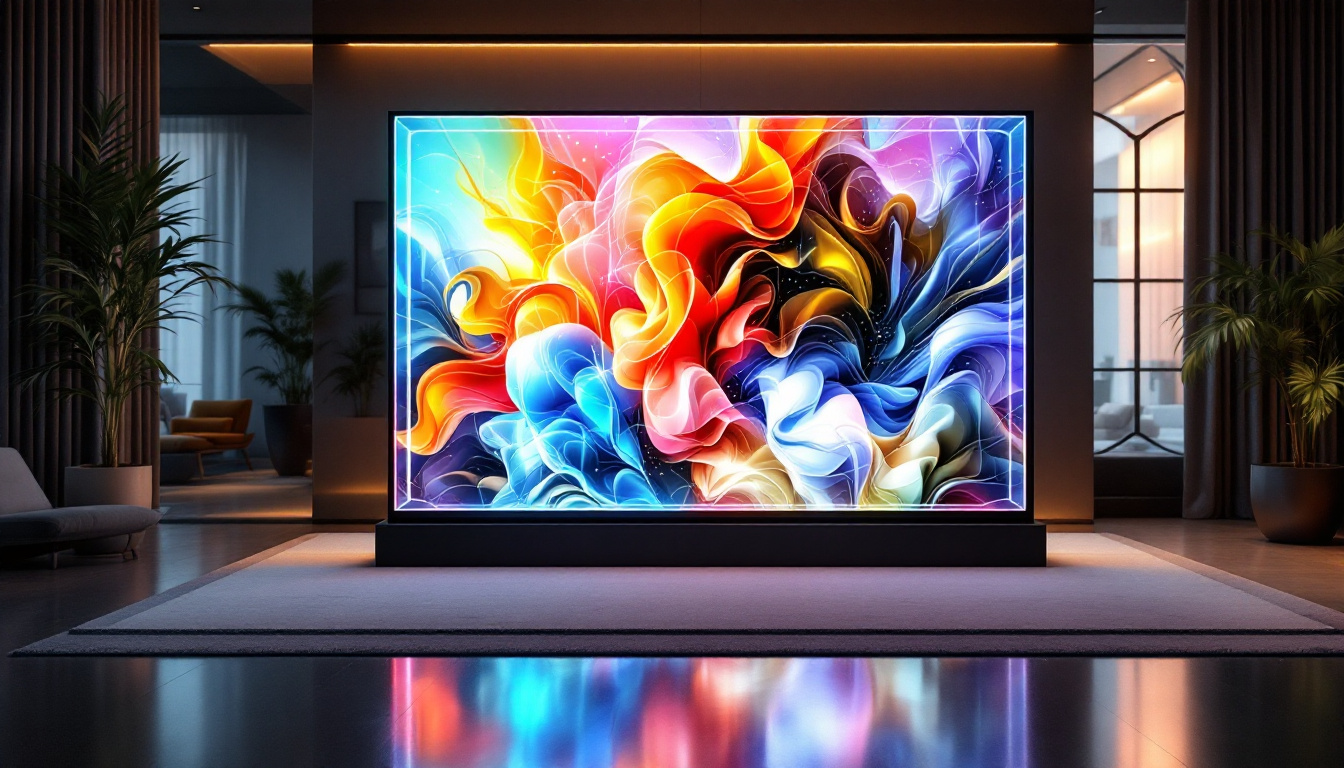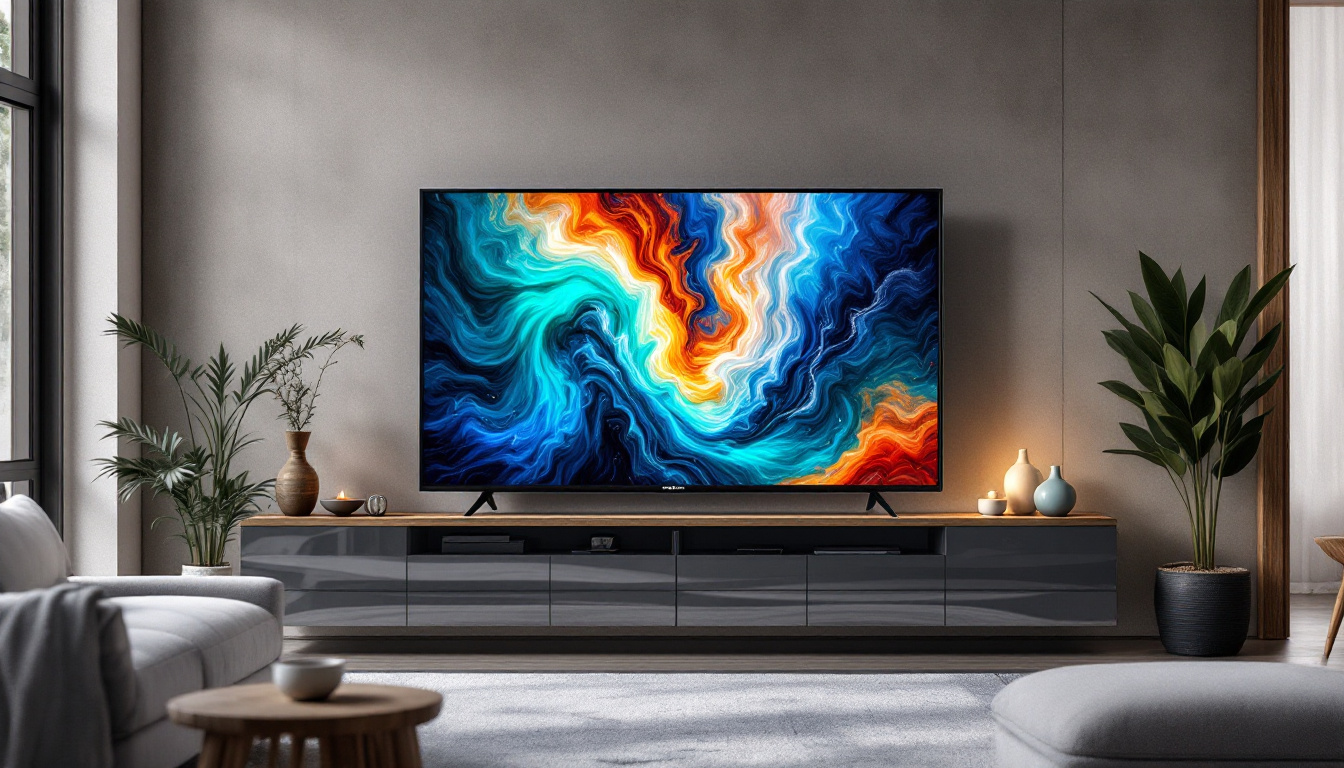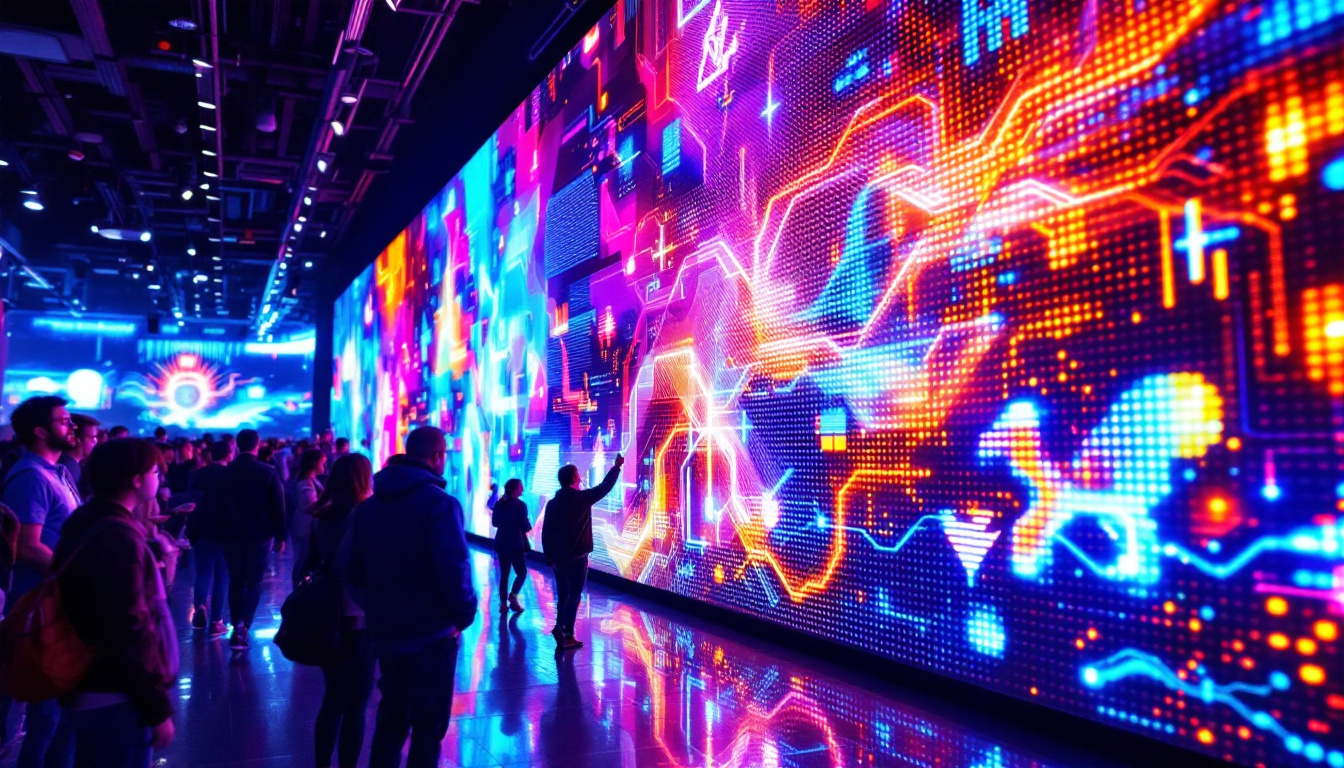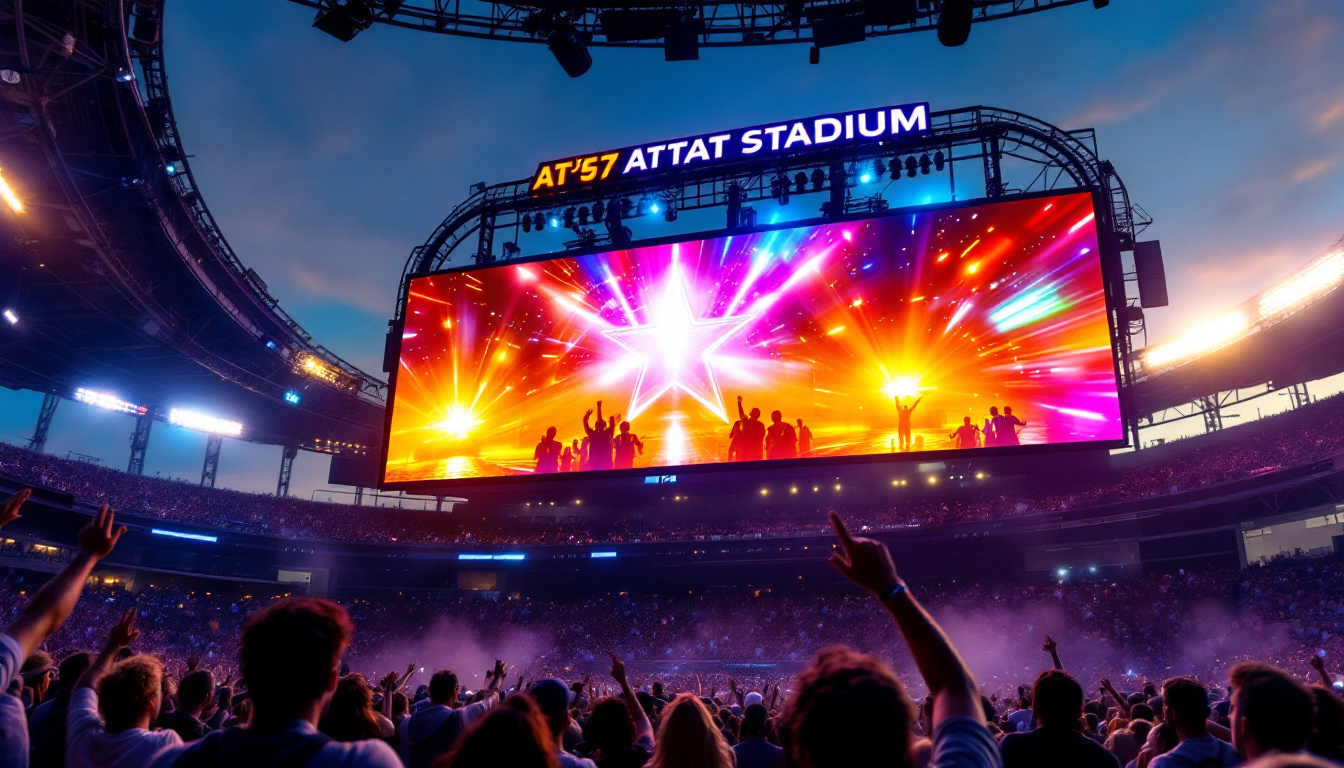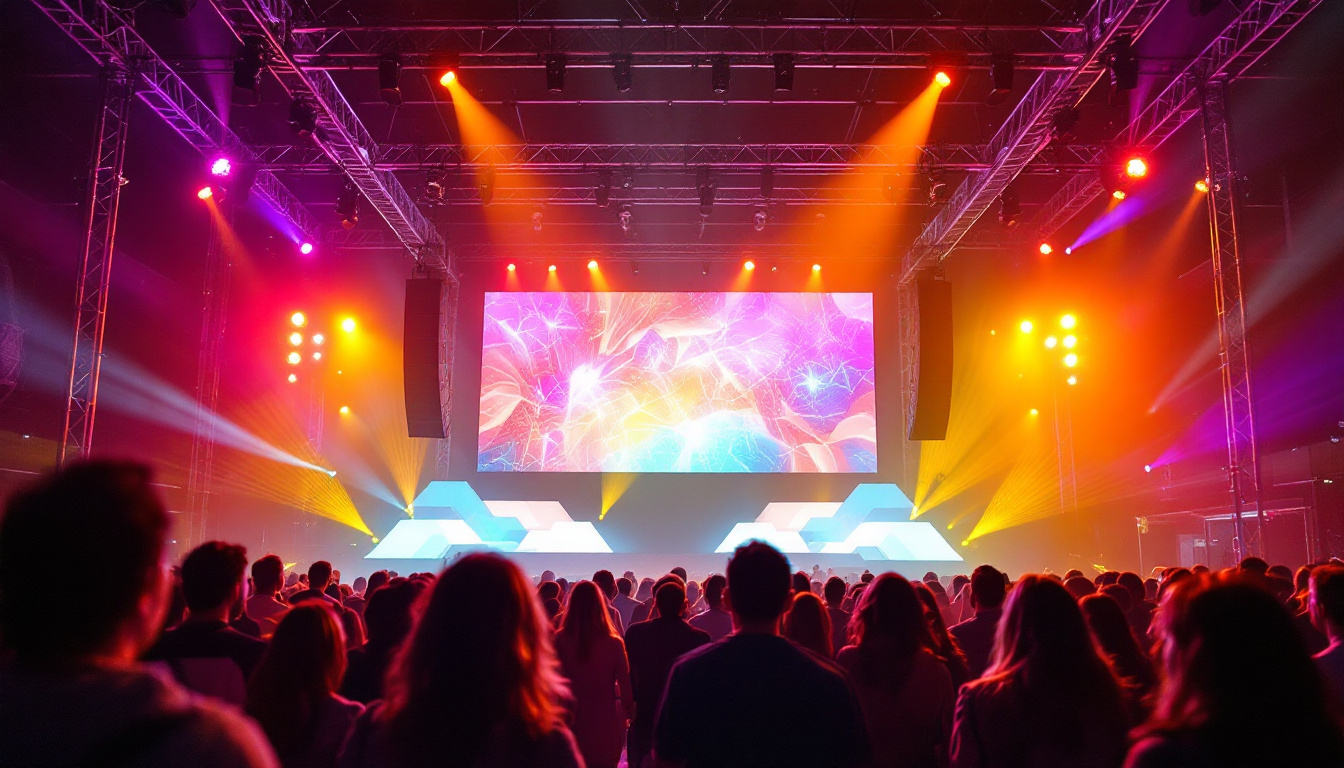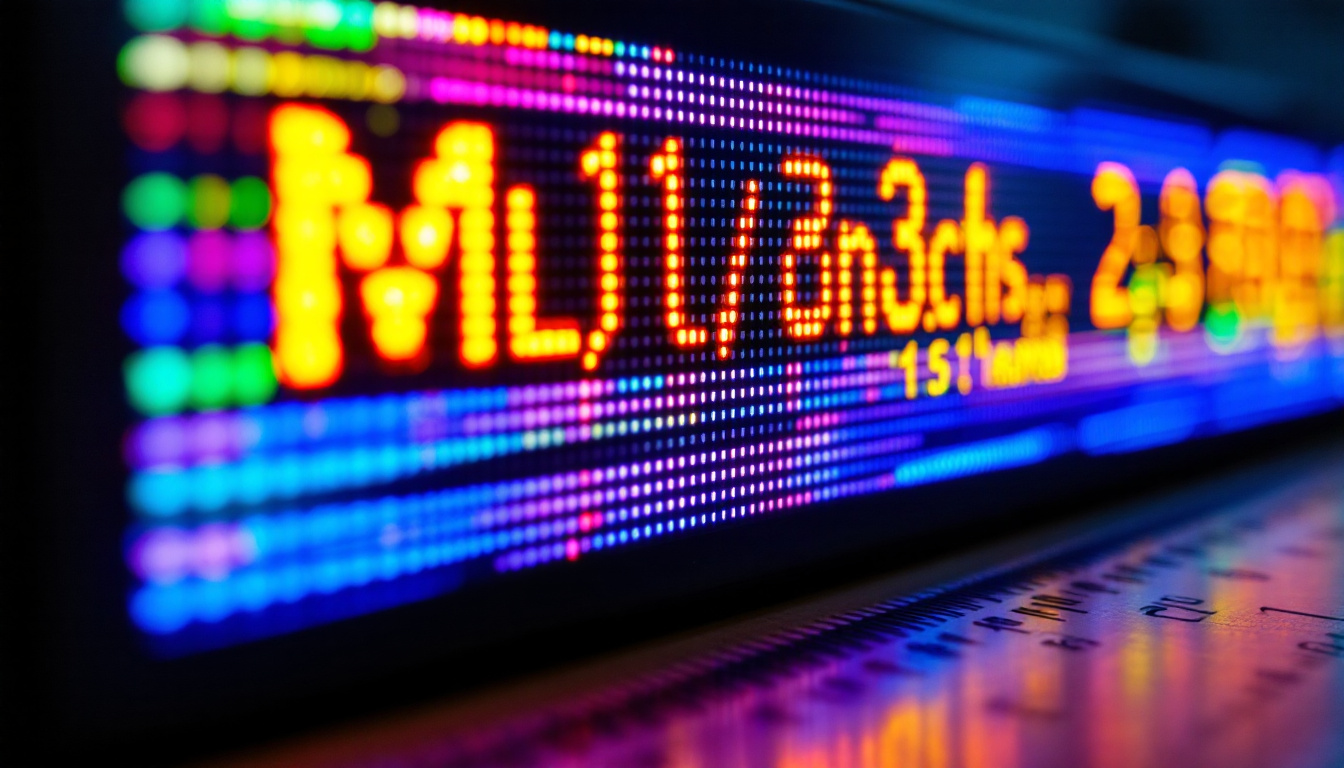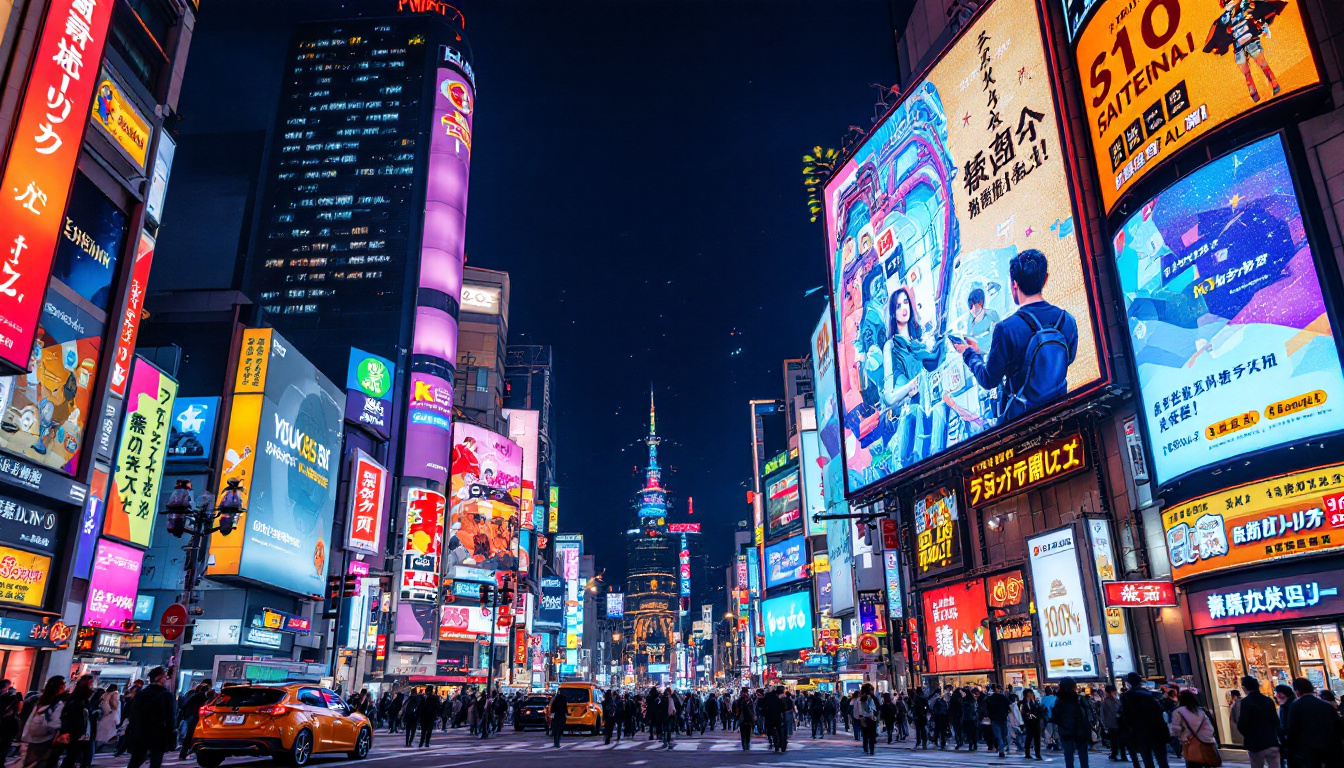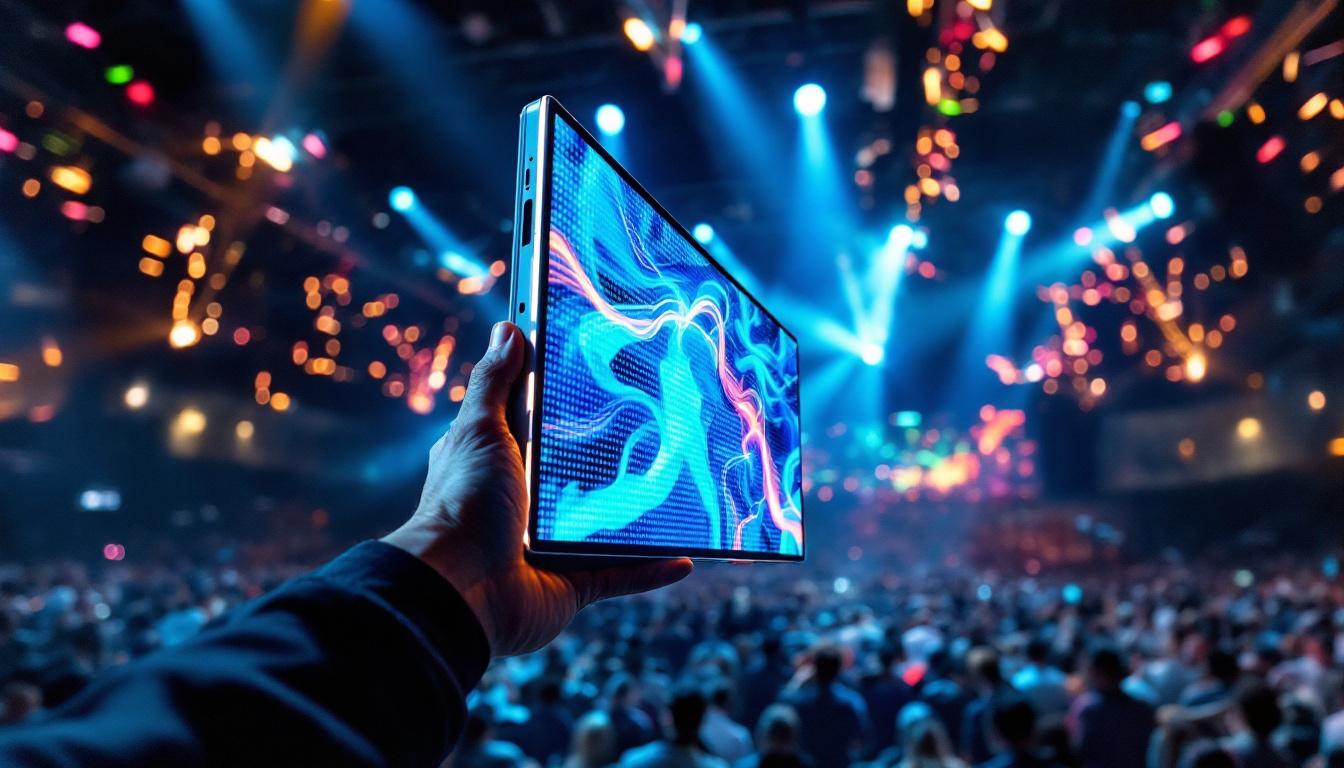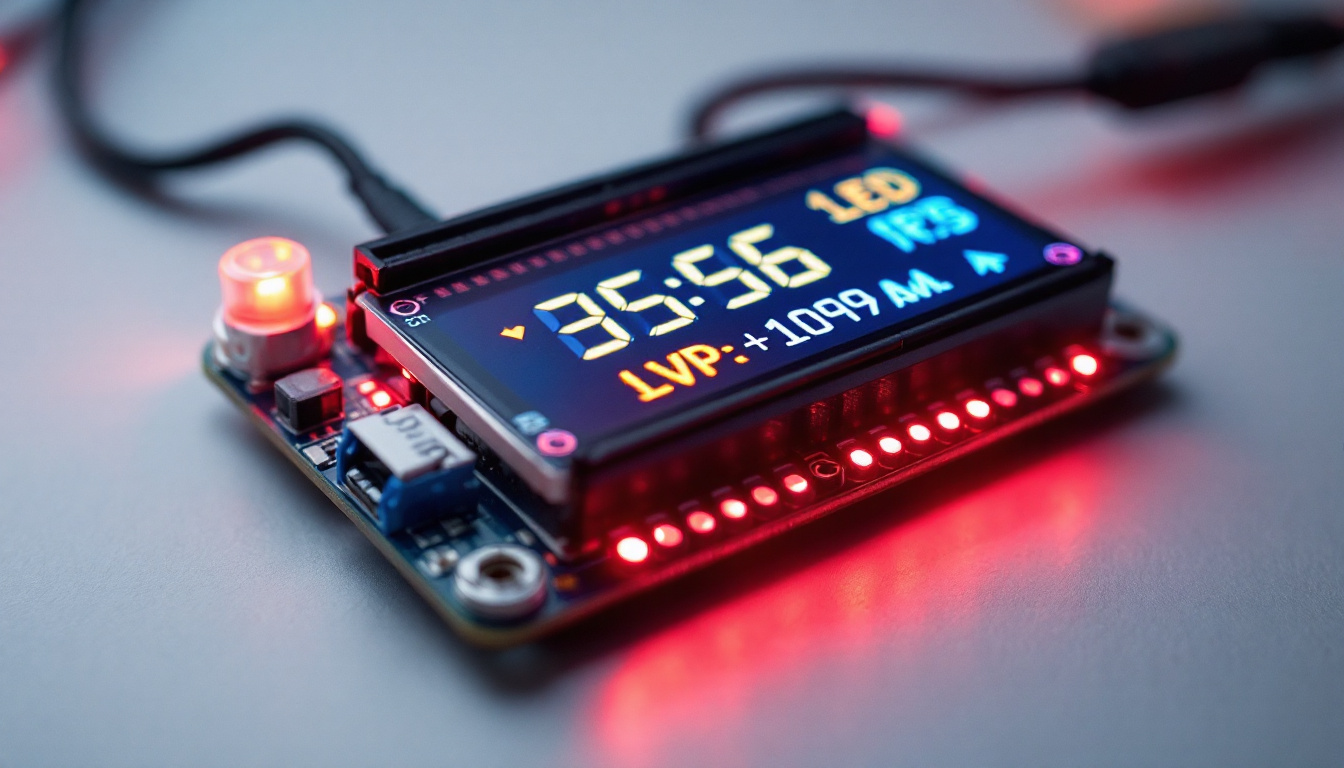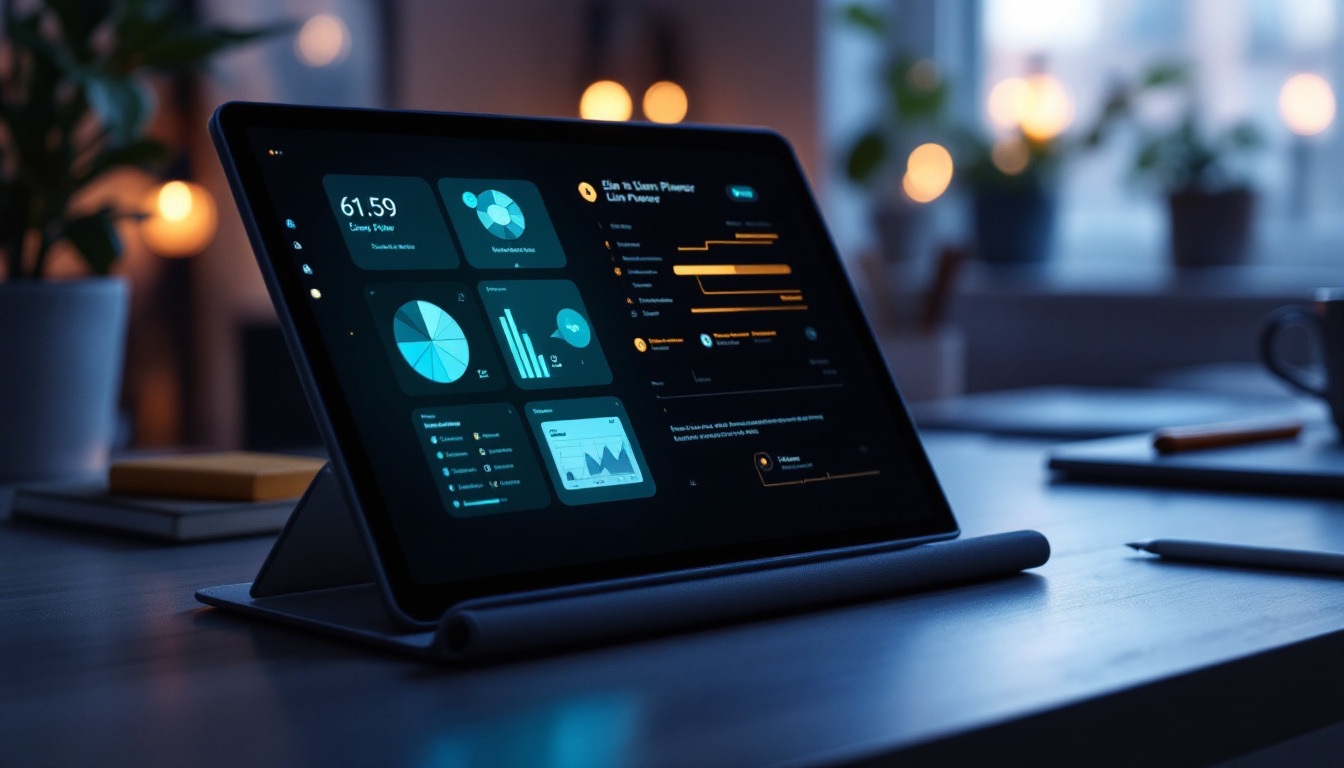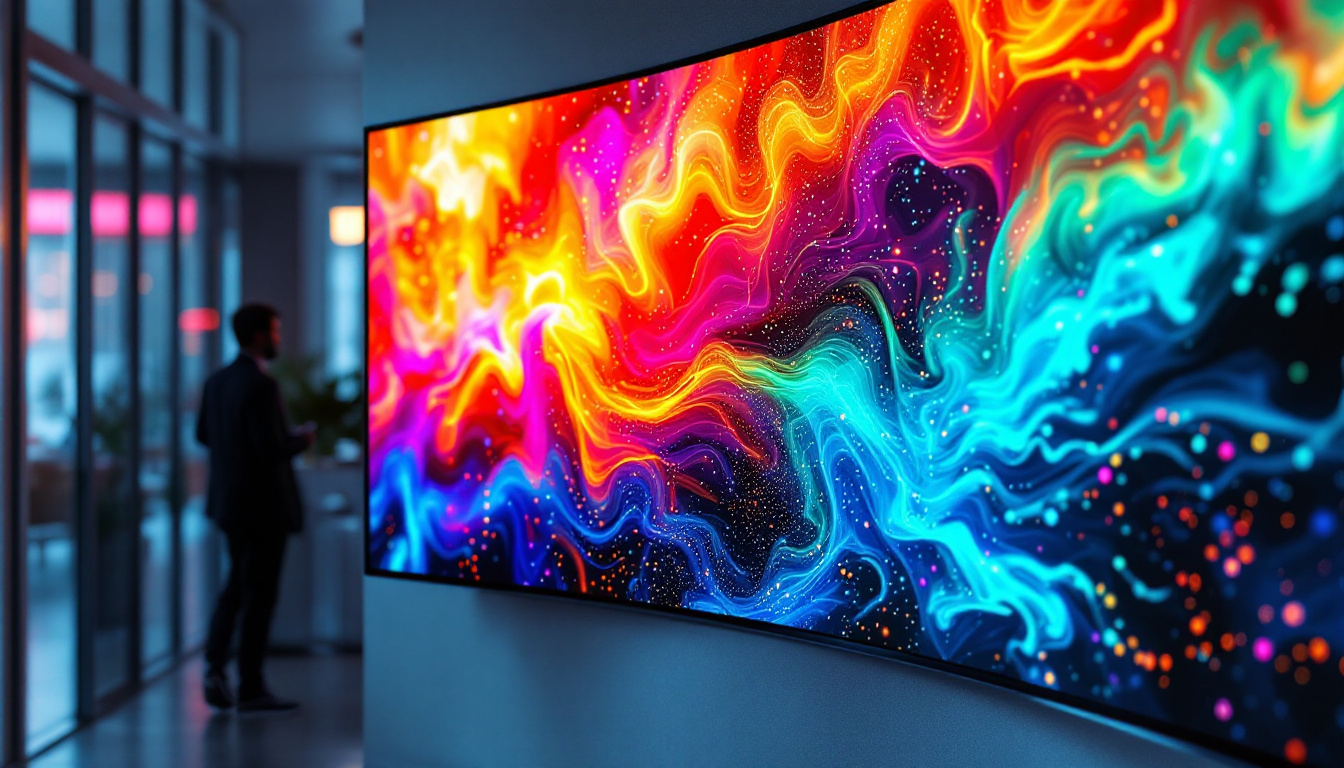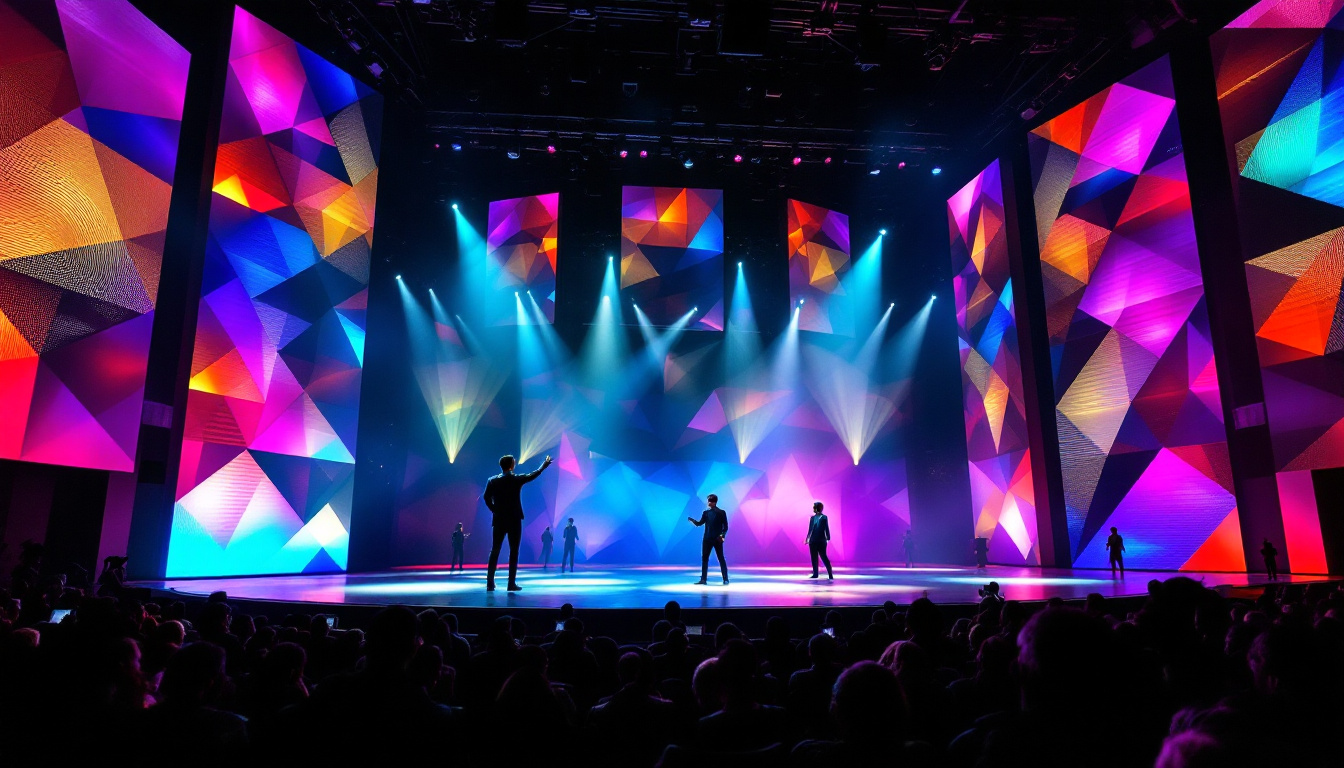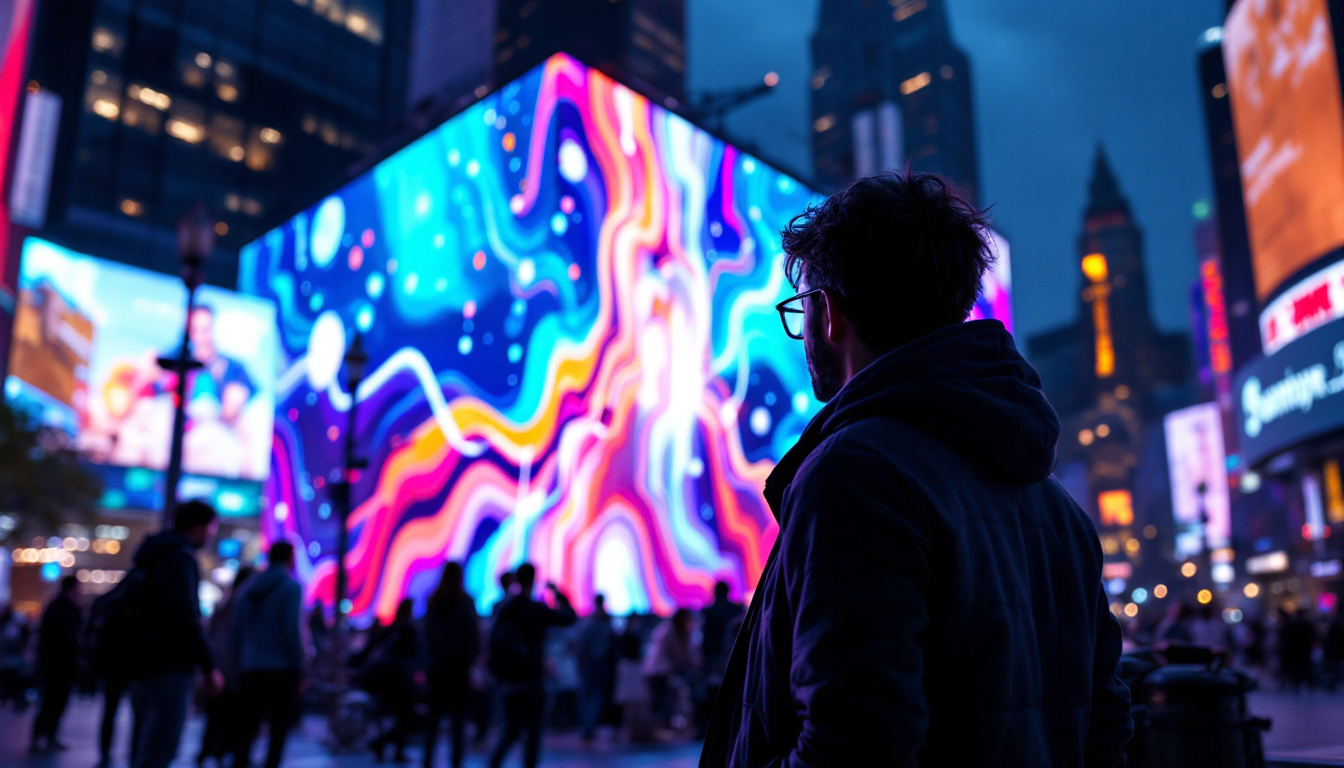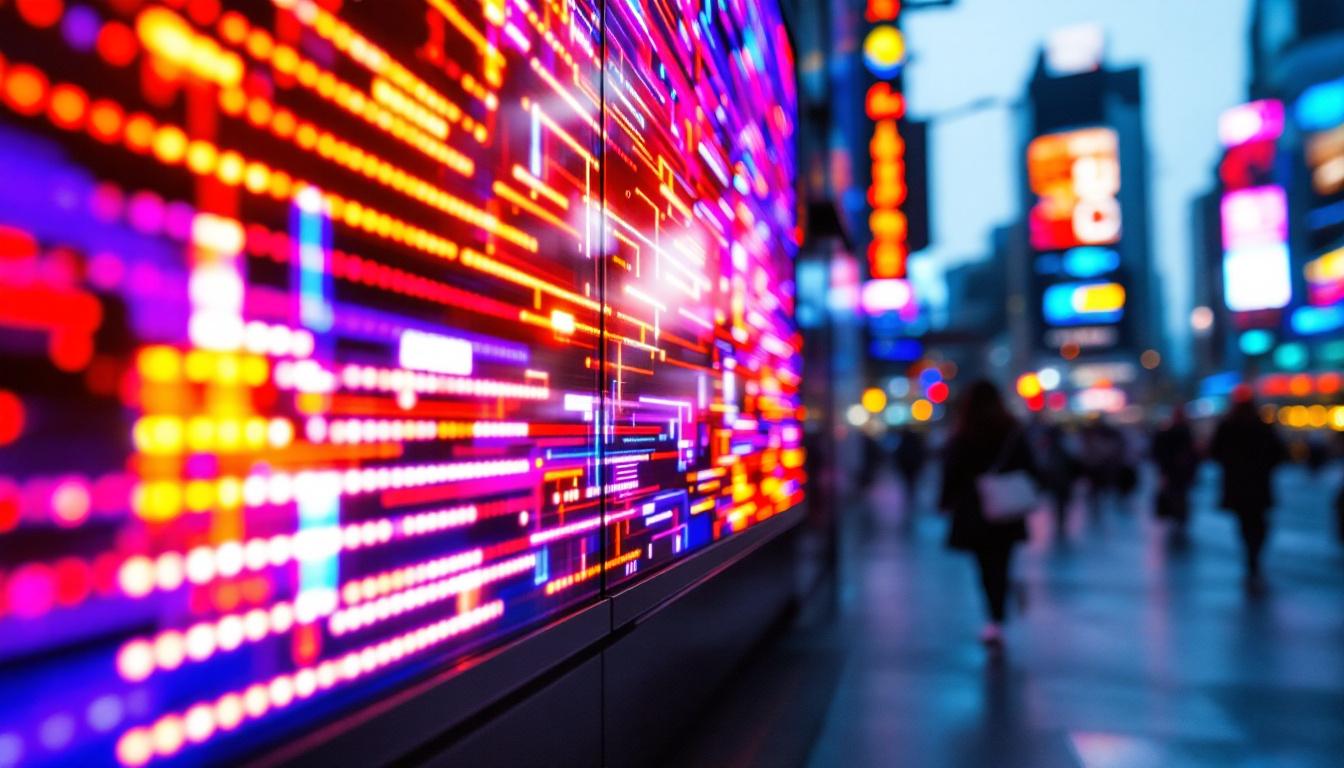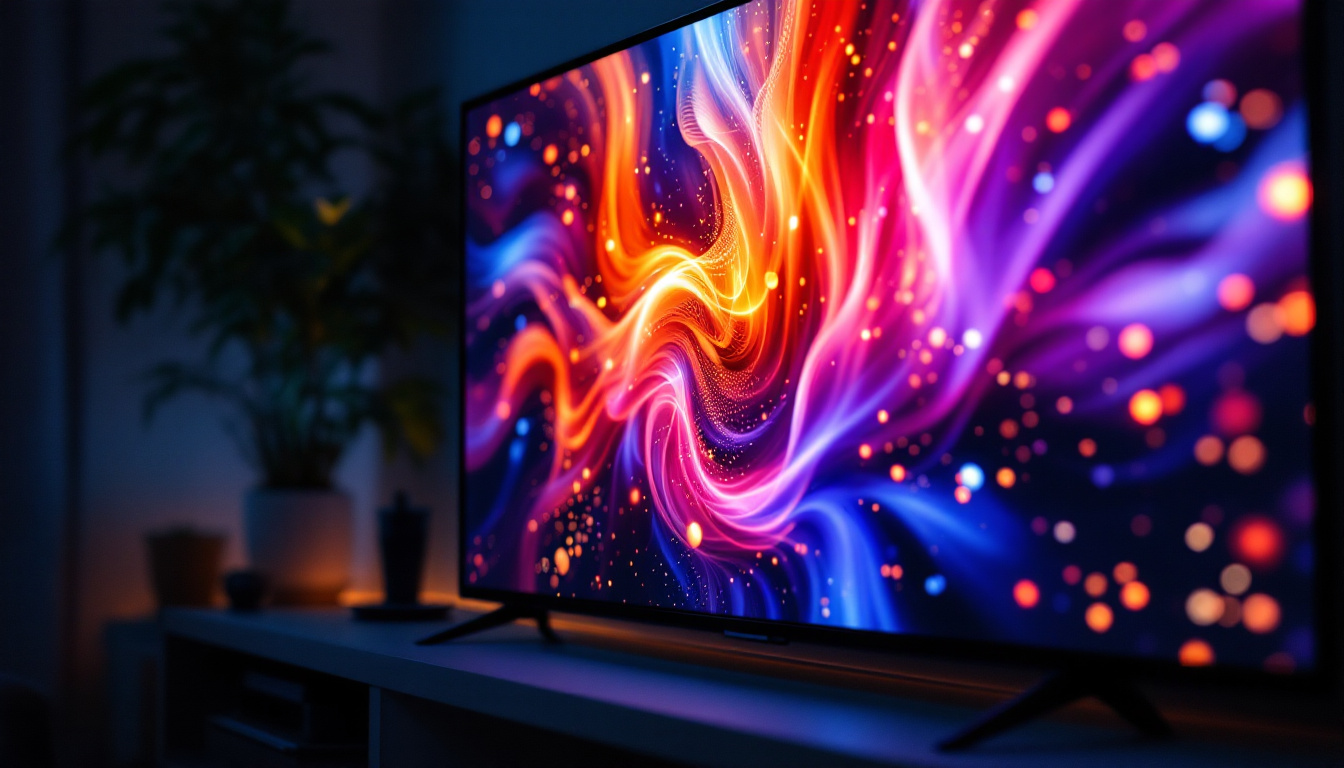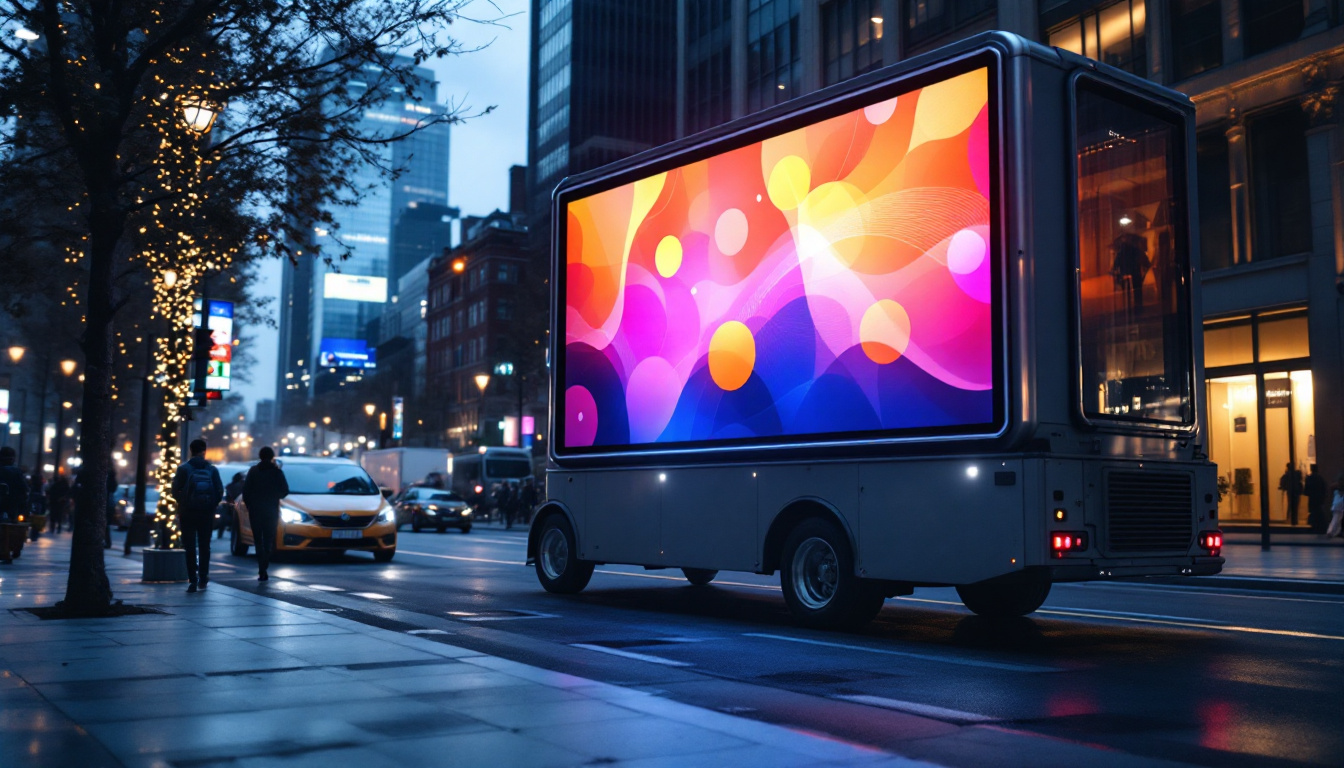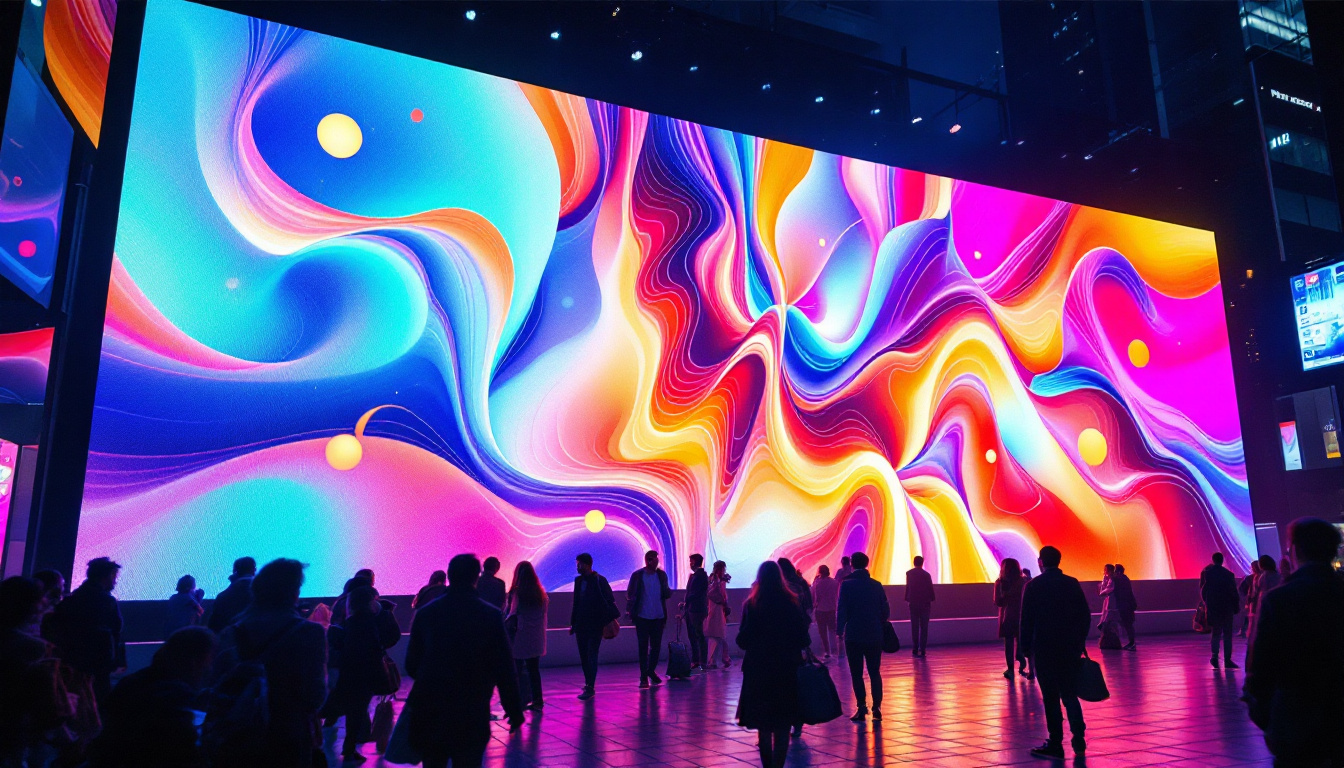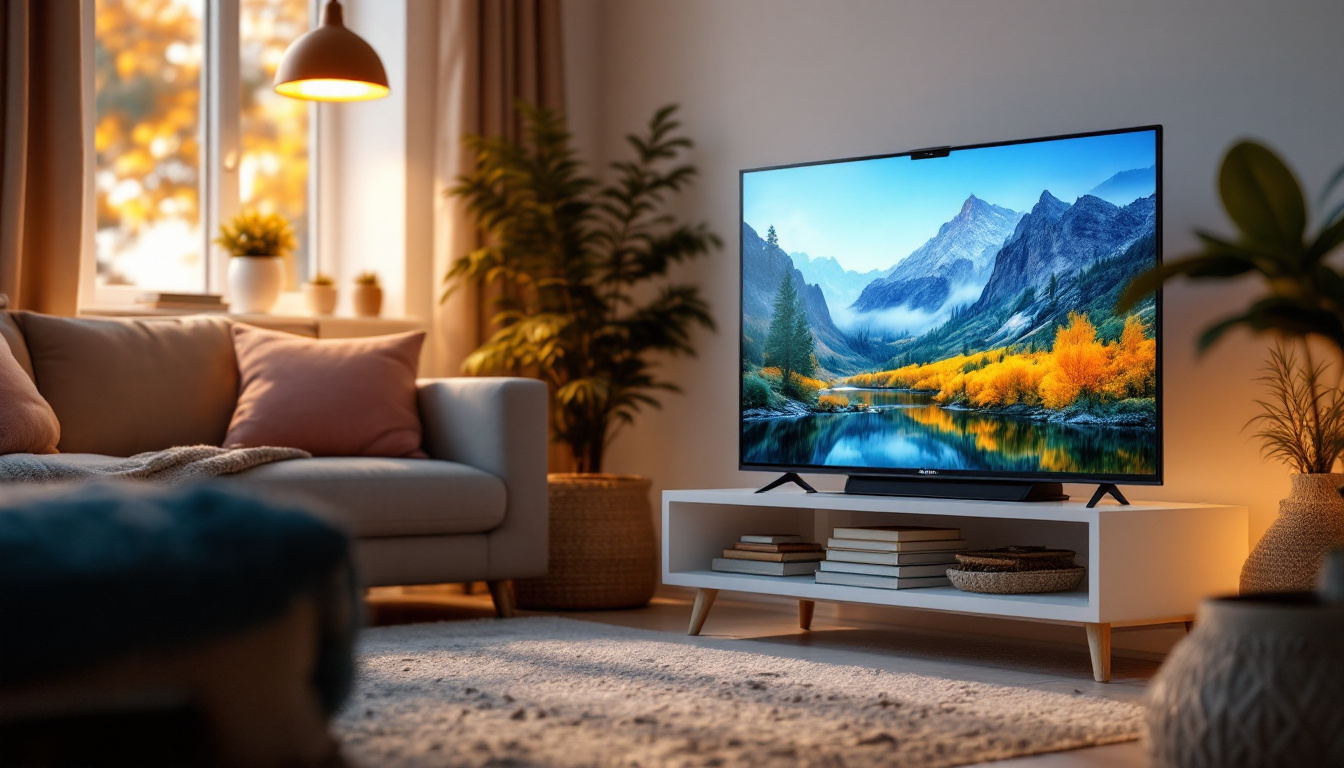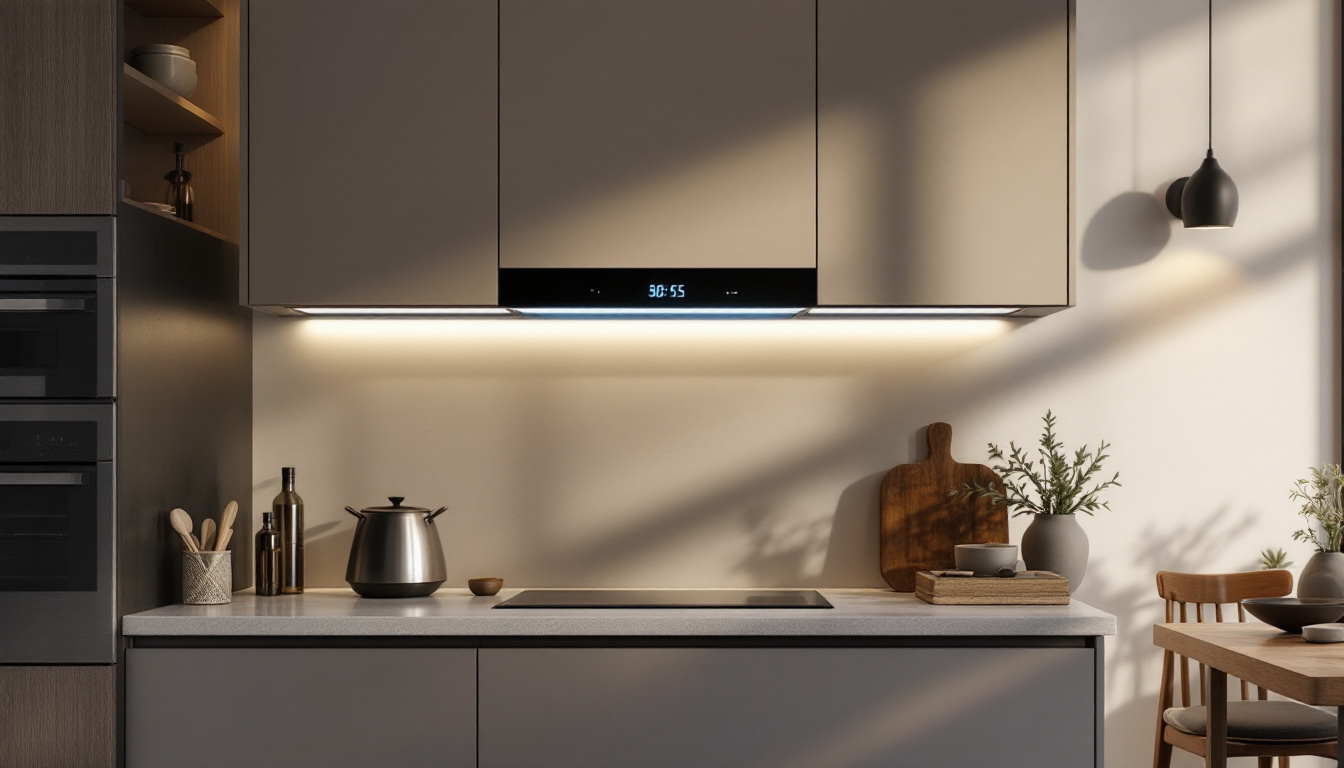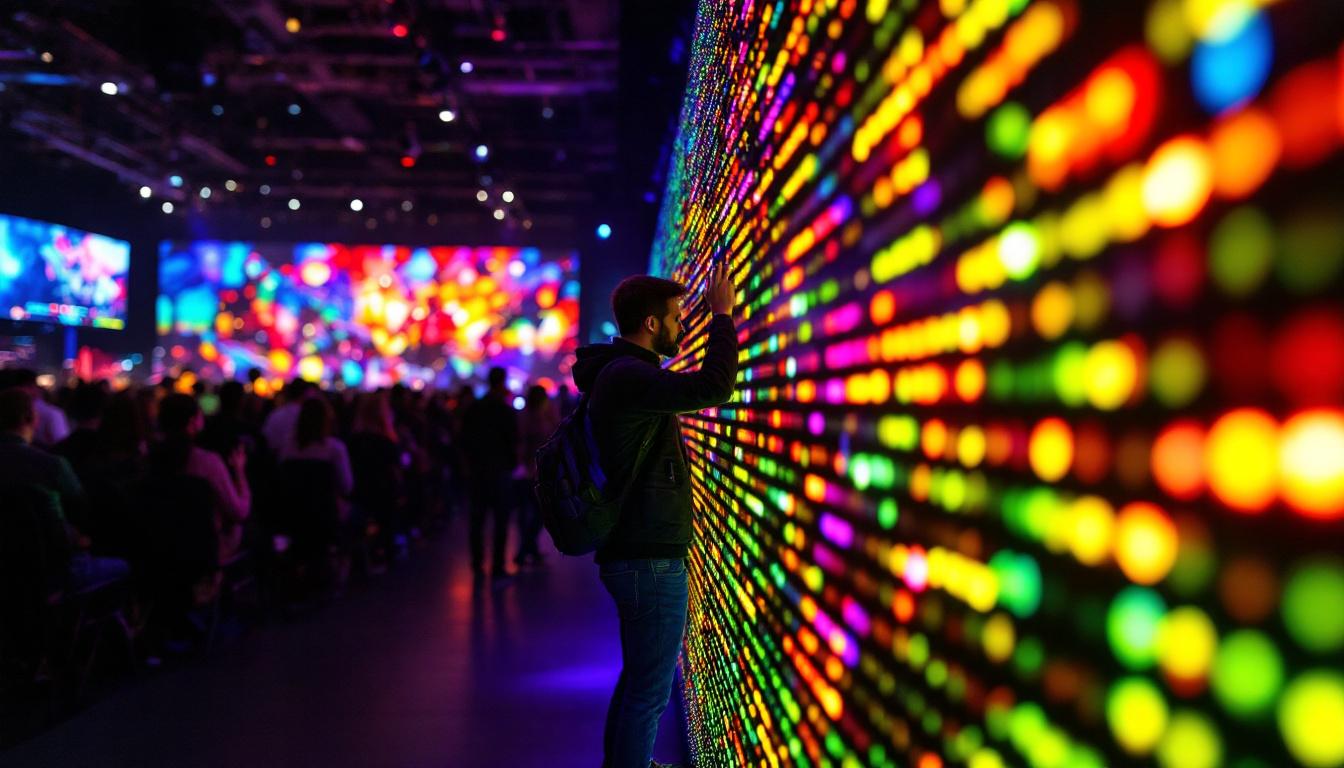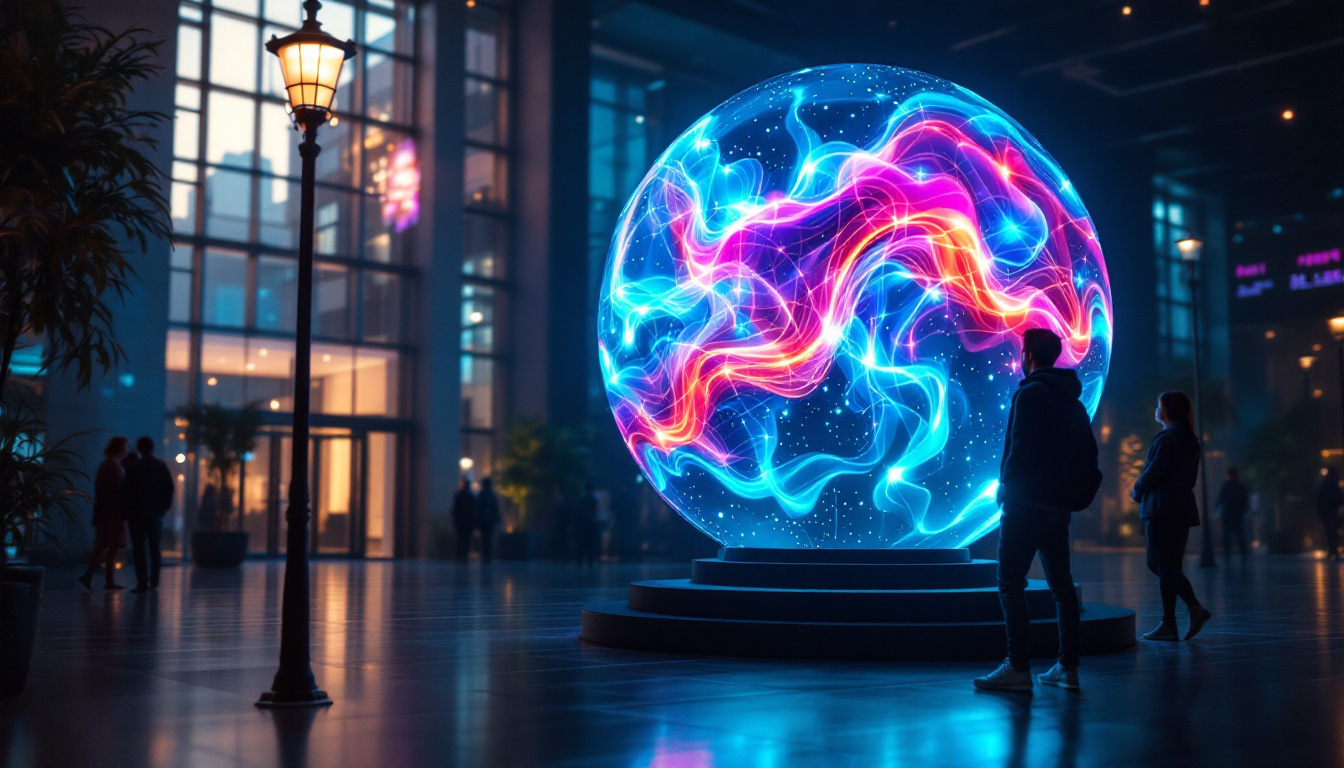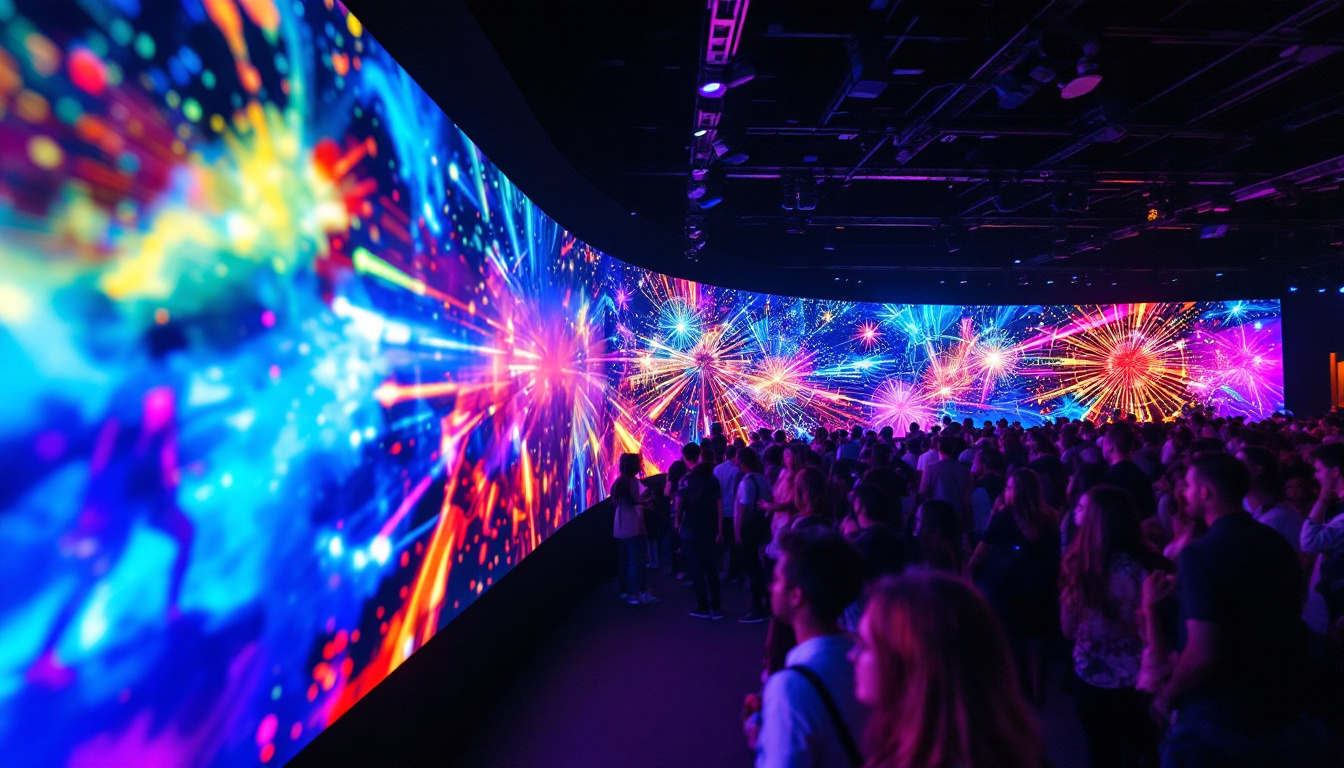In the realm of modern technology, large display systems have become increasingly popular across various industries. Among these, LED (Light Emitting Diode) displays stand out for their versatility, efficiency, and vibrant color reproduction. This article delves into the intricacies of LED displays, exploring their technology, applications, advantages, and future trends.
Understanding LED Technology
LED technology has revolutionized the way information is presented visually. At its core, an LED display consists of numerous tiny light-emitting diodes that work together to create images and videos. The fundamental principle behind LEDs is electroluminescence, where a semiconductor material emits light when an electric current passes through it. This technology not only enhances visual experiences but also contributes to energy efficiency, making it a preferred choice for both commercial and residential applications.
Moreover, the longevity of LED lights is another significant advantage. Unlike traditional incandescent bulbs, which may last around 1,000 hours, LEDs can last up to 25,000 hours or more. This durability reduces the frequency of replacements, leading to lower maintenance costs and less waste. As the demand for sustainable solutions grows, LED technology stands out as a beacon of innovation, aligning with environmental goals by consuming less power and producing less heat.
The Components of LED Displays
LED displays are composed of several key components, including the LED modules, control systems, and power supplies. Each module contains a matrix of LEDs that can be individually controlled to produce a wide range of colors and brightness levels. The control system manages the input signals and ensures that the display operates smoothly, while the power supply provides the necessary energy to illuminate the LEDs. Additionally, the housing of the display plays a crucial role in protecting the internal components from environmental factors such as moisture and dust, which can significantly impact performance and longevity.
In more advanced setups, LED displays may also incorporate features like sensors that adjust brightness based on ambient light conditions, ensuring optimal visibility at all times. This adaptability not only enhances user experience but also contributes to energy savings, as the display can reduce power consumption when less brightness is needed. Such technological advancements are paving the way for smarter, more efficient display solutions in various industries.
Types of LED Displays
There are primarily two types of LED displays: direct view and rear-projection. Direct view LED displays are commonly used for large outdoor screens, billboards, and indoor video walls. In contrast, rear-projection LED displays are typically found in settings like conference rooms and control centers, where space is limited but high-quality visuals are essential. Each type serves distinct purposes, catering to different environments and audience needs, from high-traffic public spaces to intimate meeting rooms.
Furthermore, within these categories, there are variations such as fine-pitch LED displays, which offer higher pixel density for close viewing distances, making them ideal for applications like digital signage in retail environments or high-resolution video walls in broadcast studios. The versatility of LED technology allows for customization based on specific requirements, ensuring that users can achieve the desired visual impact regardless of the setting.
How LED Displays Work
LED displays function by combining red, green, and blue (RGB) LEDs to create a full spectrum of colors. By adjusting the intensity of each color, the display can produce millions of different shades. The rapid switching of these LEDs allows for dynamic content, making LED displays ideal for video playback and real-time information dissemination. This capability is particularly beneficial in environments where timely updates are crucial, such as in transportation hubs or live event venues.
Additionally, the technology behind LED displays continues to evolve, with innovations such as flexible LED screens that can bend and conform to various shapes, opening up new possibilities for creative installations. These advancements not only enhance aesthetic appeal but also expand the potential applications of LED technology in art, architecture, and advertising, pushing the boundaries of what is visually possible in modern design.
Applications of LED Displays
LED displays have found their way into numerous applications, ranging from advertising to entertainment and beyond. Their adaptability and high visibility make them a preferred choice in various sectors.
Advertising and Marketing
One of the most prominent uses of LED displays is in advertising. Billboards and digital signage equipped with LED technology can capture attention with bright, dynamic content. Businesses leverage these displays to promote products, announce events, and engage customers in real-time. The ability to update content remotely adds a layer of convenience that traditional signage cannot match. Moreover, the interactive capabilities of LED displays, such as touch screens and QR code integration, allow for a more immersive customer experience, encouraging immediate interaction and driving sales.
Entertainment and Events
In the entertainment industry, LED displays are ubiquitous. Concerts, festivals, and sporting events utilize large LED screens to enhance the audience experience. These displays provide high-resolution visuals that can be viewed from great distances, ensuring that even those seated far from the stage can enjoy the show. Additionally, LED technology allows for creative lighting effects that can transform any venue. The versatility of LED displays also extends to film and theater productions, where they can be used as backdrops or to create dynamic sets that change throughout a performance, adding depth and visual interest.
Corporate and Educational Use
Beyond entertainment, LED displays are increasingly being used in corporate environments and educational institutions. In corporate settings, they serve as effective tools for presentations, video conferencing, and information sharing. The clarity and brightness of LED displays ensure that even in well-lit rooms, content remains visible, making them ideal for meetings and conferences. Educational institutions use LED displays for lectures, announcements, and interactive learning experiences, fostering engagement among students. These displays can also facilitate collaborative projects, allowing multiple users to share and edit content in real-time, thus enhancing the learning process and promoting teamwork among students.
Healthcare and Public Information
LED displays are making significant inroads into the healthcare sector as well. Hospitals and clinics utilize LED screens for patient information systems, displaying wait times, directions, and health tips in a clear and accessible manner. This not only improves patient experience but also helps in managing the flow of information in busy environments. In public spaces, LED displays serve as vital tools for disseminating information during emergencies, such as weather alerts or safety instructions, ensuring that the public remains informed and safe. Their ability to convey important messages quickly and effectively makes them an invaluable asset in both healthcare and public safety contexts.
Advantages of LED Displays
The rise of LED displays can be attributed to their numerous advantages over traditional display technologies. These benefits make them a compelling choice for various applications.
Energy Efficiency
One of the most significant advantages of LED displays is their energy efficiency. Compared to older technologies like LCD and CRT, LEDs consume considerably less power, resulting in lower operational costs. This efficiency not only benefits the environment but also allows businesses to save on electricity bills.
Brightness and Visibility
LED displays are known for their exceptional brightness, making them suitable for both indoor and outdoor use. Their high luminosity ensures that content remains visible even in direct sunlight, a crucial factor for outdoor advertising. This visibility enhances the effectiveness of marketing campaigns and ensures that critical information is easily accessible.
Longevity and Durability
LED displays boast a longer lifespan compared to traditional display technologies. With proper maintenance, an LED display can last for over 100,000 hours, significantly reducing the need for replacements. Furthermore, they are more resistant to shock and vibration, making them ideal for high-traffic environments.
Challenges and Considerations
While LED displays offer numerous advantages, they are not without challenges. Understanding these challenges is essential for making informed decisions regarding their use.
Initial Costs
The initial investment for LED display technology can be substantial. Although prices have decreased in recent years, high-quality LED displays still require a significant financial commitment. Businesses must weigh the long-term benefits against the upfront costs to determine if the investment is justified.
Color Calibration
Color calibration is another challenge associated with LED displays. Ensuring that colors are accurately represented across the display can be complex, especially in large installations. Regular calibration is necessary to maintain color consistency and quality, which may require specialized knowledge and equipment.
Heat Generation
LED displays can generate heat during operation, particularly in large installations. Proper ventilation and cooling systems are essential to prevent overheating, which can lead to reduced performance and lifespan. This requirement adds another layer of complexity to the installation and maintenance of LED displays.
Future Trends in LED Display Technology
The future of LED display technology looks promising, with several trends emerging that are set to shape the industry in the coming years.
Advancements in MicroLED Technology
MicroLED technology represents a significant advancement in LED displays. By using microscopic LEDs, this technology offers higher resolution and improved color accuracy. MicroLED displays are expected to become more prevalent, particularly in high-end applications such as televisions and digital signage.
Integration with Smart Technology
As the world moves towards smart technology, LED displays are also evolving. Integration with the Internet of Things (IoT) allows for enhanced interactivity and data-driven content. Smart LED displays can adapt in real-time based on environmental factors, user interactions, and analytics, providing a more personalized experience.
Flexible and Transparent Displays
The development of flexible and transparent LED displays is another exciting trend. These displays can be incorporated into various surfaces, such as windows and walls, opening up new possibilities for advertising and design. Their versatility allows for creative applications that were previously unattainable with traditional display technologies.
Conclusion
LED displays have transformed the way information is conveyed visually, offering a blend of efficiency, vibrancy, and adaptability. Their applications span across advertising, entertainment, corporate, and educational sectors, making them an integral part of modern communication strategies. Despite some challenges, the advantages of LED technology far outweigh the drawbacks, and ongoing advancements promise to further enhance their capabilities.
As industries continue to embrace digital transformation, LED displays will undoubtedly play a pivotal role in shaping the future of visual communication. With innovations like MicroLED technology and smart integration on the horizon, the potential for LED displays is limitless. Organizations looking to invest in display technology should consider the myriad benefits that LED displays offer, ensuring they remain at the forefront of this dynamic field.
Discover LumenMatrix’s Innovative LED Display Solutions
Ready to elevate your visual communication strategy with the latest in LED display technology? Look no further than LumenMatrix, where innovation meets impact. From mesmerizing Indoor and Outdoor LED Wall Displays to versatile Vehicle and Sports LED Displays, our solutions are designed to captivate and engage. Whether you’re looking to create an immersive environment with our Floor and Custom LED Displays or seeking the sleekness of an All-in-One or LED Transparent Display, LumenMatrix has the state-of-the-art technology to bring your vision to life. Check out LumenMatrix LED Display Solutions today and experience the power of advanced visual storytelling.


